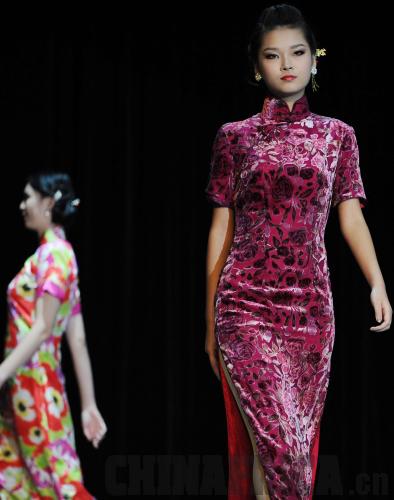|
 |
|
HARMONY: The timeless qipao garment is ideally suited to display the grace and charm of Chinese women |
Beijing denizens flocked to a recent exhibition of qipao dresses in the city. But this most famed traditional Chinese clothing is not only sealed within a museum, it's being kept alive through a new generation of fashionistas.
Chasing older days
Skewed Tobacco Pouch Street is one of the most famous hutong neighborhoods in Beijing. At its top entrance is a small tailor shop behind a closed door.
The owner of the shop is Shi Yongxia. Shi moved to the street 12 years ago, and has witnessed its evolution from silent road to famed tourism site. But Shi would prefer it if her shop's door could shut out the newfound noise permanently. All she wants is to be left alone with her qipao.
A qipao, also known as a cheongsam, is a body-hugging one-piece Chinese dress. Its design can be traced back Manchus who ruled during the Qing Dynasty between 1636 and 1911. But its modern incarnation, now recognized in China as the "standard" form of qipao, was first developed in Shanghai in the 1920s. From the 1920s to the end of the 1940s, it was the most popular dress style in the country. Women of all stripes - housewives, students, office workers, movie stars and diplomats - favored wearing the qipao.
Once the People's Republic of China was founded in 1949, fashion-conscious Chinese began to embrace Western clothing more fully. This shift saw a concurrent fall in the popularity of qipao dresses among Chinese women. The style ultimately became a symbol of the past.
Clothes are the best way to recall memories of older times, and Shi has kept a sewing needle in hand for the past 30 years precisely for this reason.
Shi's grandma was a tailor. As a child, Shi witnessed the sewing of many qipao dresses. She would reference these memories later on in life.
"I reach back to my childhood memories when I make qipao," says Shi. "Lucky for me, I've actually seen the real qipao that people wore in old times. Those memories inspire me all the time."
Shi keeps learning, desperate to recreate the images from her history. Elderly clients are her favorite; their requirements are classically precise. She also loves to immerse herself in traditional culture, reading novels and looking at decades-old photos.
"Some young people want to add modern elements to the qipao," says Shi. "They don't like my traditional style, but I don't care. If you really love traditional culture, you will like my works."
|